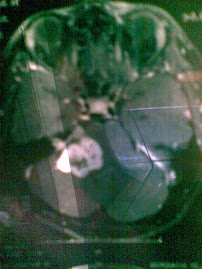Tumors
A tumor compressing the facial nerve anywhere along its complex pathway can result in facial paralysis. Common culprits are facial neuromas, congenital cholesteatomas, hemangiomas, acoustic neuromas, parotid gland neoplasms, or metastases of other tumours.
Patients with facial nerve paralysis resulting from tumours usually present with a progressive, twitching paralysis, other neurological signs, or a recurrent Bell's palsy-type presentation. The latter should always be suspicious, as Bell's palsy should not recur. A chronically discharging ear must be treated as a cholesteatoma until proven otherwise; hence, there must be immediate surgical exploration.
Computed tomography (CT) or magnetic resonance (MR) imaging should be used to identify the location of the tumour, and it should be managed accordingly.
Oftentimes, since facial neoplasms have such an intimate relationship with the facial nerve, removing tumors in the facial region becomes perplexing as the physician is unsure how to manage the tumor without causing even more palsy. Typically, benign tumors should be removed in a fashion that preserves the facial nerve, while malignant tumors should always be resected along with large areas of tissue around them, including the facial nerve. While this will inevitably lead to heightened paralysis, safe removal of a malignant neoplasm is worth the often treatable palsy that follows. In the best case scenario, paralysis can be corrected with techniques including hypoglossal-facial nerve anastomosis, end-to-end nerve repair, cross facial nerve grafting, or muscle transfer/transposition techniques, such as the gracilis free muscle transfer.
en.wikipedia.org/wiki/Facial_nerve_paralysis -


.jpg)

No comments:
Post a Comment